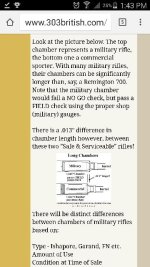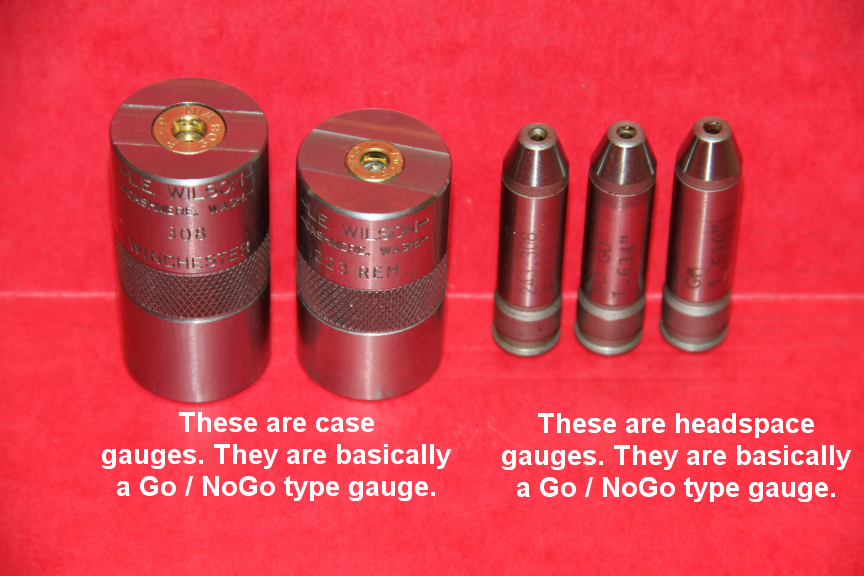Headspace is a chamber characteristic, and a gun still has a headspace value whether it is within any accepted tolerance or not. There is a standard headspace tolerance for each chambering for new guns, but there is also a field reject headspace tolerance limit that is outside the manufacturing tolerance and which armorers and gunsmiths use to decide when a barrel needs to be replaced or set back and rechambered. All this, however, is only necessary for remaining on good terms with commercial cartridge standards. Many a wildcatter has changed the headspace in his chamber to something nobody else in the world uses, but his chamber still has headspace. Anyone with headspace outside the manufacturing tolerances can load fire-formed cases to match it, as if it were a wildcat, and they still have headspace.
The case gauge determines if a case will fit inside a chamber with new-gun minimum tolerance headspace.
An indirect headspace gauge, like the case thimble of the RCBS Precision Mic, is making what is called an indirect or take-off measurement of the headspace of a chamber by examining what size a case fire-forms to inside the chamber. Due to brass spring-back, this is not a precise measurement. Like any indirect measurement made by measuring dimensional mirroring by an intermediary, the error in the intermediary has to be added to the measurement error. In this case the intermediary is the fire-formed case, which is typically a thousandth smaller than the chamber.


